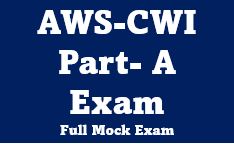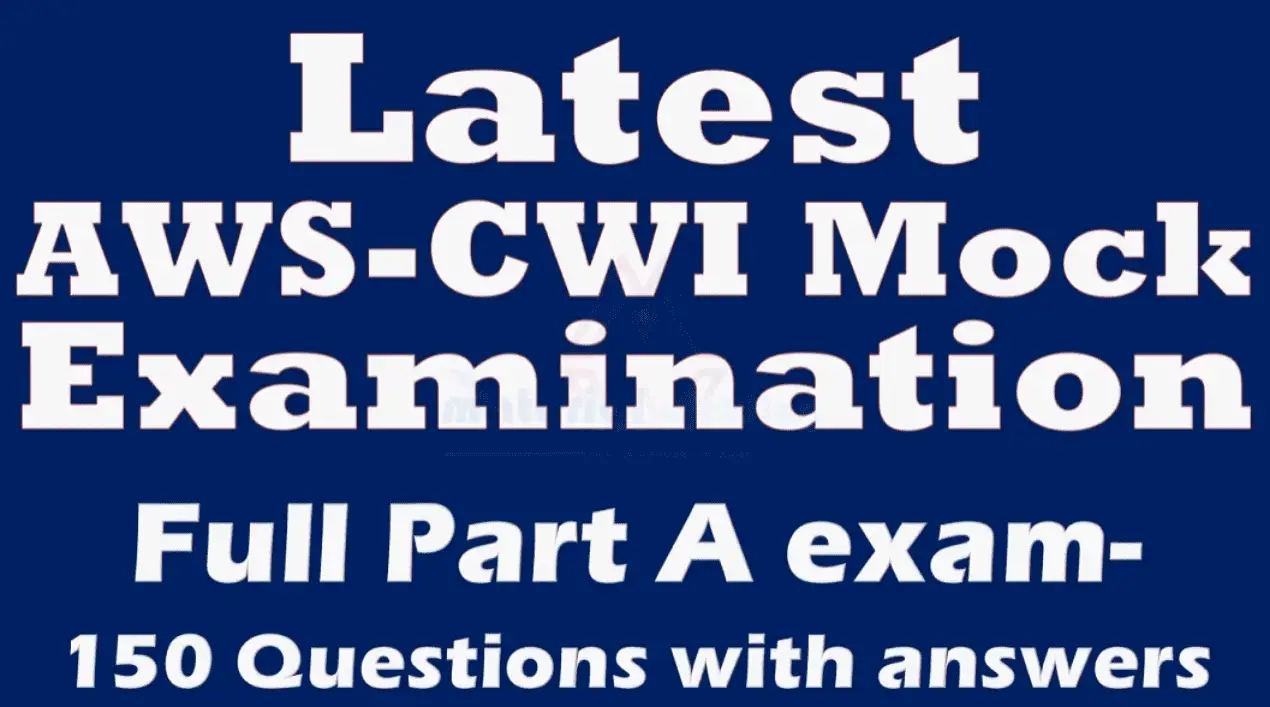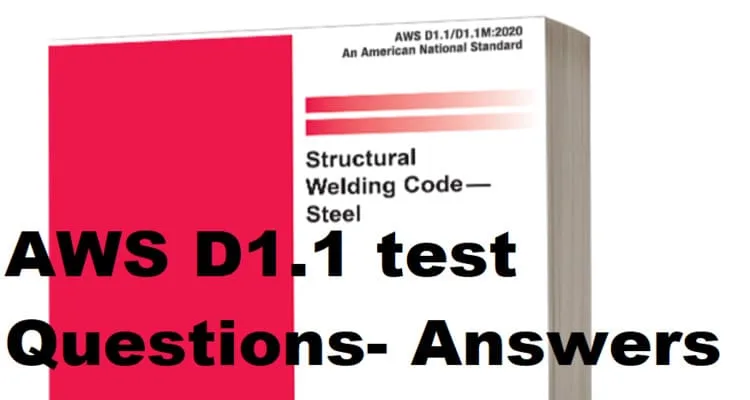Practice 1000+ ASNT VT Level III Questions & Free Mock Exam.
🏆🏆🏆Guaranteed pass the VT Level III Exam.🏆🏆🏆
- What property of mirrors allows them to change the direction of light?
- a) Refraction
- b) Diffraction
- c) Reflection
- d) Dispersion
- Which type of mirror provides an enlarged field of view of the reflected image?
- a) Flat
- b) Convex
- c) Concave
- d) Parabolic
- Where is the reflecting focal point of a concave or spherical mirror located?
- a) In front of the mirror
- b) Behind the mirror
- c) At the center of the mirror
- d) At the top of the mirror
- What happens to light when it is projected onto a spherical mirror normal to the curve of the surface?
- a) It is absorbed by the mirror
- b) It is refracted away from the mirror
- c) It is focused slightly in front of the mirror
- d) It passes through the mirror unaffected
- How does a concave mirror reflect light when a point light source is placed at its focal point?
- a) It reflects the light back towards the source
- b) It refracts the light away from the source
- c) It reflects the light parallel to the normal of the curve
- d) It focuses the light at a point in front of the mirror
- Which type of prism deflects light rays by 90 degrees?
- a) Right angle prism
- b) Porro prism
- c) Convex prism
- d) Concave prism
- What is the angle above which all light is reflected known as?
- a) Incidence angle
- b) Refractive angle
- c) Critical angle
- d) Reflection angle
- What is the primary function of a porro prism?
- a) To produce a 90 degree reflection
- b) To separate frequencies of a chromatic light source
- c) To change the orientation of the image produced by light rays
- d) To provide an enlarged field of view of the reflected image
- How do prisms separate the frequencies of a chromatic light source?
- a) By refraction
- b) By diffraction
- c) By dispersion
- d) By reflection
- Why do the higher frequency portions of the spectrum emerge from the base of the prism?
- a) Because the refractive indices of the materials are higher at the base
- b) Because the refractive indices of the materials are lower at the base
- c) Because the index of refraction changes with the frequency of the light
- d) Because the angle of incidence is greater at the base
- What is the most frequent reason for reduced vision acuity?
- a) Glaucoma
- b) Cloudy ocular media
- c) Uncorrected refractive error
- d) Macular degeneration
- How is vision conventionally graded?
- a) By measures of contrast sensitivity
- b) By the size of the visual objects
- c) By measures of visual acuity
- d) By the brightness of the background
- What is the typical contrast percentage for a vision acuity chart with black letters?
- a) Less than 20%
- b) Between 50% to 60%
- c) Greater than 85%
- d) Exactly 100%
- What is contrast sensitivity a better predictor of, compared to vision acuity?
- a) Brightness perception
- b) Object size perception
- c) Functional vision performance
- d) Color perception
- At what spatial frequencies is the contrast sensitivity of the normal visual system highest?
- a) Below 2 cycles per degree
- b) Between 6 to 8 cycles per degree
- c) Between 2 to 6 cycles per degree
- d) Above 8 cycles per degree
- Which method presents letters of constant size with decreasing contrast to measure contrast sensitivity?
- a) Pelli-Robson ™ letter sensitivity chart
- b) Weber contrast method
- c) Michelson contrast method
- d) Contrast threshold method
- What does a difference in far vision acuity versus near vision acuity indicate?
- a) Need for cataract surgery
- b) Need for glaucoma treatment
- c) Potential refractive correction benefit
- d) Development of macular degeneration
- Which condition is NOT listed as a reason for reduced vision acuity?
- a) Glaucoma
- b) Scarred cornea
- c) Diabetic retinopathy
- d) Nearsightedness
- What is the angular measure of the smallest detail that can be resolved when presented with high contrast?
- a) Vision threshold
- b) Visual acuity
- c) Spatial frequency
- d) Contrast threshold
- What aspect of the visual system does contrast sensitivity primarily depend on?
- a) Lens curvature
- b) Retinal pigment density
- c) Size of the pupil
- d) Neural processing
- What is the goal when choosing lighting for automated inspection and machine vision applications?
- a) To increase the brightness of the environment
- b) To decrease the contrast between discontinuities
- c) To optimize contrast and reduce signal processing complexity
- d) To minimize the spectral sensitivity of sensors
- Which type of light source is ineffective during direct visual testing but recommended for automated inspection?
- a) Incandescent
- b) Luminescent
- c) Polarized
- d) Solar
- What is critical in automated inspection due to light sensors’ limited ability to adapt to differing levels of illumination?
- a) Consistent illumination
- b) Dynamic illumination
- c) Variable illumination
- d) Intermittent illumination
- Which characteristic of a test material determines the type of lighting geometry and light source for inspection?
- a) Reflective, absorptive, and transmissive characteristics
- b) Temperature and pressure
- c) Electrical conductivity
- d) Chemical composition
- What type of light source is commonly used for inspecting nonselective absorptive materials?
- a) Condenser reflector
- b) Spot projector
- c) Diffuse light source
- d) Collimated light source
- Which lighting technique floods the area of interest with light to minimize shadow formation?
- a) Side illumination
- b) Front illumination
- c) Back illumination
- d) Top illumination
- Which type of light source is characterized by emission due to thermal excitation of atoms or molecules?
- a) Solar
- b) Luminescent
- c) Incandescent
- d) Coherent
- How is luminescent light different from incandescent light sources?
- a) It emits light without thermal excitation
- b) It emits light with a broader spectrum
- c) It emits light with a higher degree of phase coherence
- d) It emits light with a more monochromatic nature
- What is the primary characteristic of coherent light?
- a) Broad spectrum
- b) Non-directional propagation
- c) Parallel alignment of rays
- d) Random phase coherence
- Which optical technique uses polarized light to measure interference patterns for assessing test objects?
- a) Diffraction
- b) Refraction
- c) Birefringence
- d) Dispersion
- What is the term used to describe discontinuities formed during the metal casting process due to imperfect fusion between two streams of metal?
- a) Cold Shut
- b) Hot Tears
- c) Blowholes
- d) Porosity
- Answer: a) Cold Shut
- Which type of discontinuity may result from uneven cooling in thin sections or corners that adjoin heavier masses of metal?
- a) Cold Shut
- b) Pipe
- c) Hot Tears
- d) Blowholes
- Answer: c) Hot Tears
- Gas porosities in castings are caused by the accumulation of gas bubbles during solidification. What term describes the non-metallic inclusions usually found in ferrous alloys?
- a) Cold Shut
- b) Hot Tears
- c) Blowholes
- d) Nonmetallic Inclusions
- Answer: d) Nonmetallic Inclusions
- What type of discontinuity may appear as seams in the rolled ingot and can be conical, wide at the surface, and tapering internally?
- a) Cold Shut
- b) Pipe
- c) Hot Tears
- d) Blowholes
- Answer: d) Blowholes
- What is the term used to describe the rounded cavities caused by the accumulation of gas bubbles in molten metal as it solidifies?
- a) Cold Shut
- b) Pipe
- c) Hot Tears
- d) Porosity
- Answer: d) Porosity
- What is undercut in welding?
- a) A groove formed at the toe or root of a weld
- b) The complete filling of the root of the weld joint with weld metal
- c) The melting away of base metal at the root of a weld
- d) The reduction of base metal thickness due to excessive weld metal
- Answer: c) The melting away of base metal at the root of a weld
- Which standard specifies that undercut should be less than 0.8 mm deep in completed welds?
- a) AWS D1
- b) ASME Boiler and Pressure Vessel Code
- c) ASTM International
- d) ISO 9001
- Answer: b) ASME Boiler and Pressure Vessel Code
- What is the consequence of inadequate joint penetration in welding?
- a) Increase in base metal thickness
- b) Improved fatigue strength of the joint
- c) Reduction in joint strength, particularly fatigue strength
- d) Enhancement of joint ductility
- Answer: c) Reduction in joint strength, particularly fatigue strength
- Which tool is recommended for visually detecting surface cracks in welding?
- a) High-power microscope
- b) 5× magnifying lens
- c) Ultrasonic testing device
- d) Infrared camera
- Answer: b) 5× magnifying lens
- What causes arc strikes in welding?
- a) Poorly connected welding ground clamp
- b) Insufficient weld metal
- c) Inadequate base metal thickness
- d) Lack of joint penetration
- Answer: a) Poorly connected welding ground clamp
Answers
- Answer: c) Reflection
- Answer: b) Convex
- Answer: a) In front of the mirror
- Answer: c) It is focused slightly in front of the mirror
- Answer: c) It reflects the light parallel to the normal of the curve
- Answer: a) Right angle prism
- Answer: c) Critical angle
- Answer: d) To provide an enlarged field of view of the reflected image
- Answer: c) By dispersion
- Answer: c) Because the index of refraction changes with the frequency of the light
- Answer: c) Uncorrected refractive error
- Answer: c) By measures of visual acuity
- Answer: c) Greater than 85%
- Answer: c) Functional vision performance
- Answer: c) Between 2 to 6 cycles per degree
- Answer: a) Pelli-Robson ™ letter sensitivity chart
- Answer: c) Potential refractive correction benefit
- Answer: d) Nearsightedness
- Answer: b) Visual acuity
- Answer: d) Neural processing
- Answer: c) To optimize contrast and reduce signal processing complexity
- Answer: c) Polarized
- Answer: a) Consistent illumination
- Answer: a) Reflective, absorptive, and transmissive characteristics
- Answer: c) Diffuse light source
- Answer: b) Front illumination
- Answer: c) Incandescent
- Answer: d) It emits light with a more monochromatic nature
- Answer: c) Parallel alignment of rays
- Answer: c) Birefringence





